The Geometry of Inorganic and Organic Matter
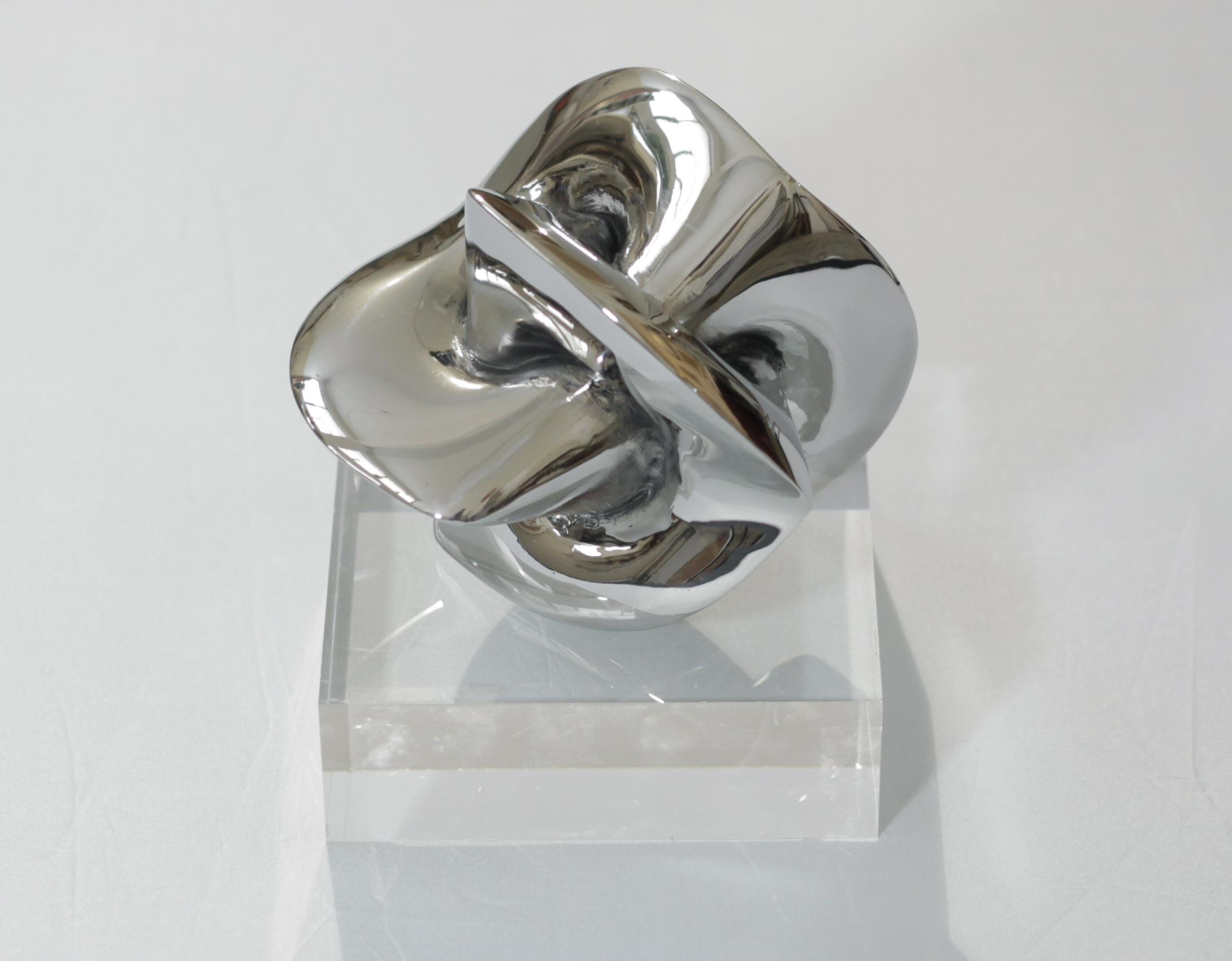
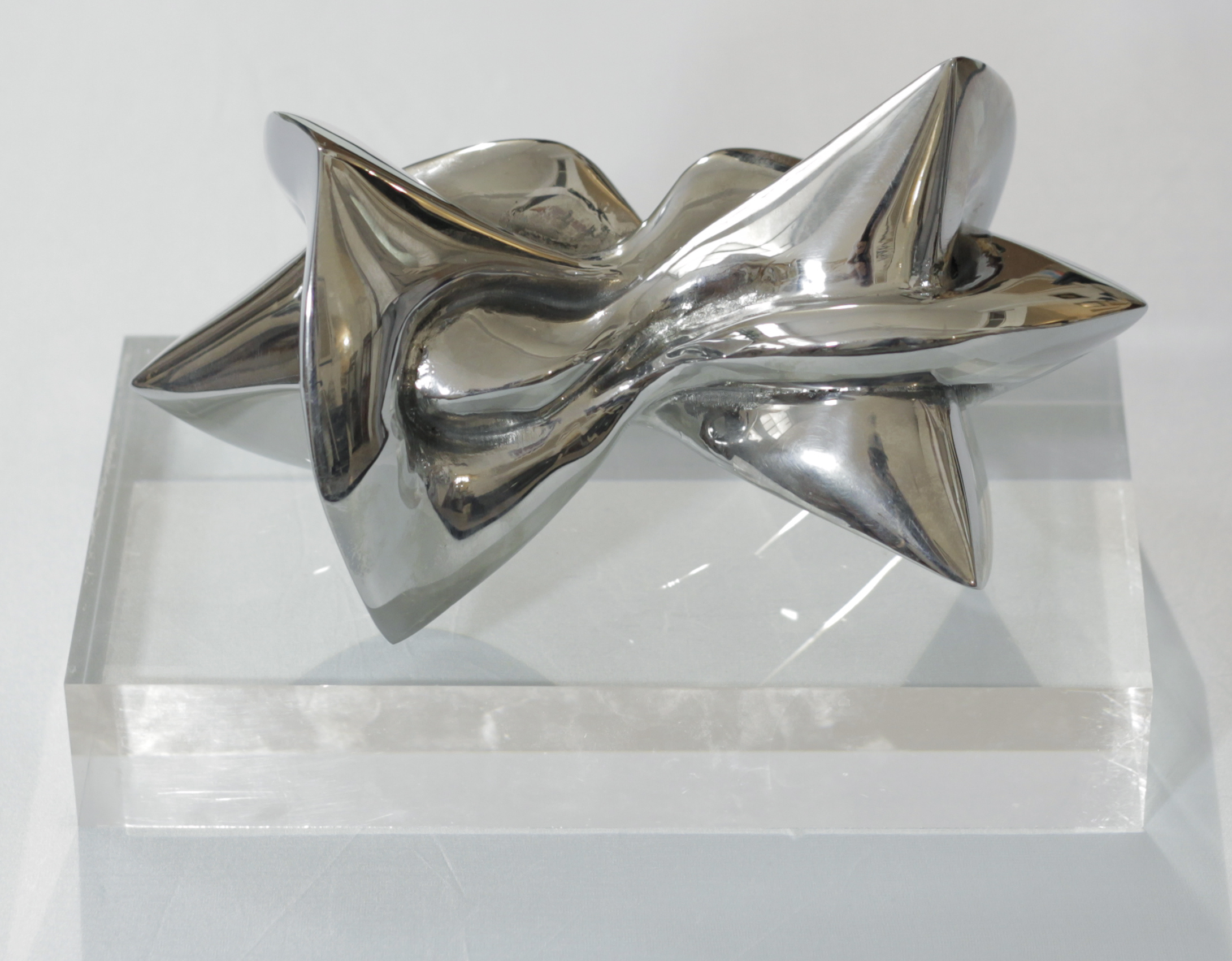
Click on the above photos for more material
Left: Desmos − Point, 14 x 14 x 14cm, stainless steel, base Plexiglas. Right: Desmos − Line, 24 x 14 x 14cm, stainless steel, base Plexiglas.
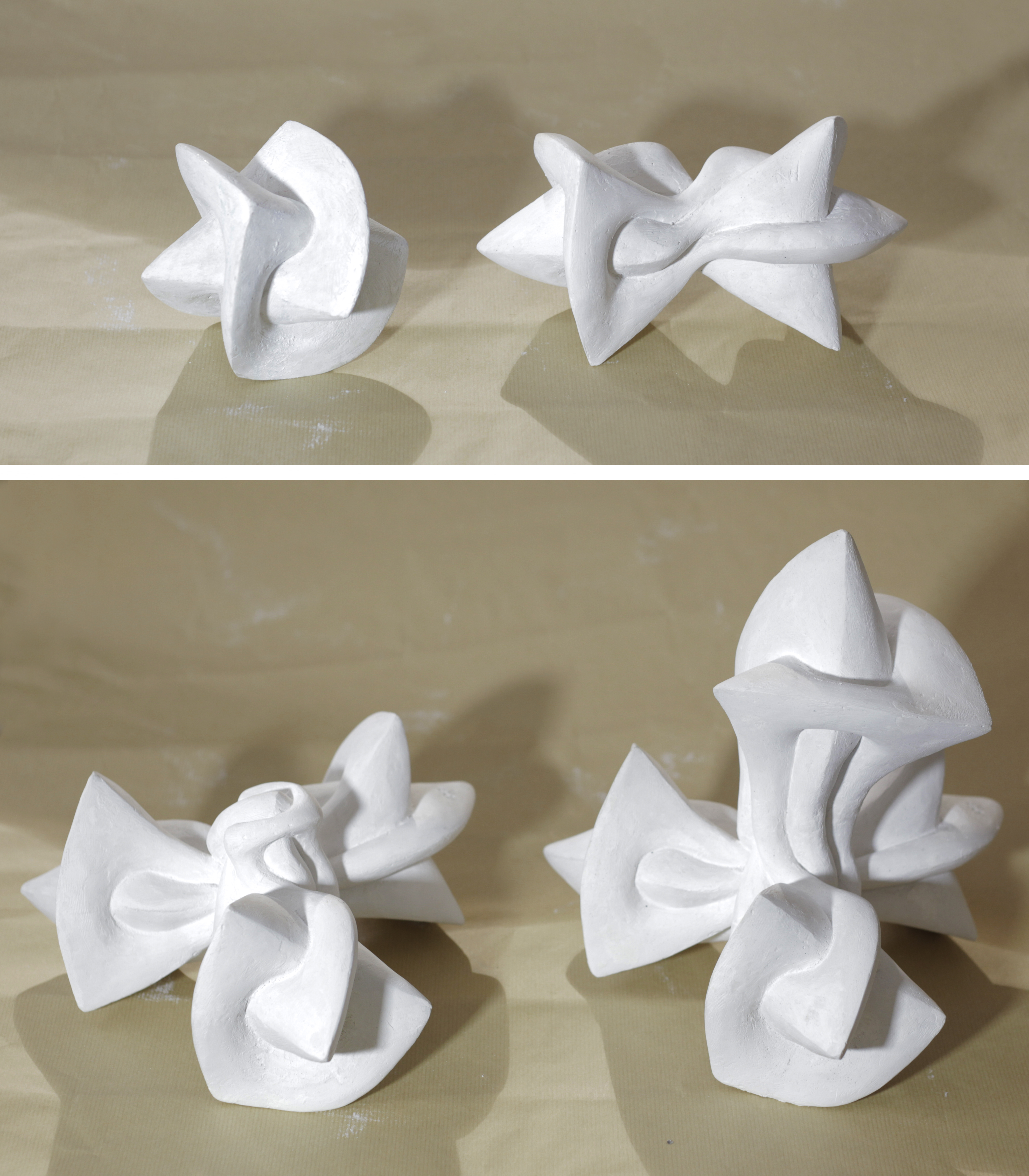
The series of art works that is based on the DESMOS-Point and evolves into Line, Plane, Solid. (plaster)
The Series of art works which has as its starting point the Regular Tetrahedron.
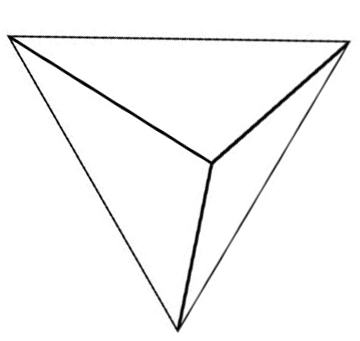 |
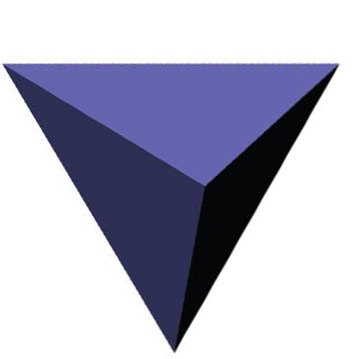 |
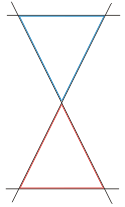 |
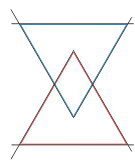 |
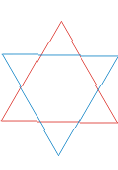 |
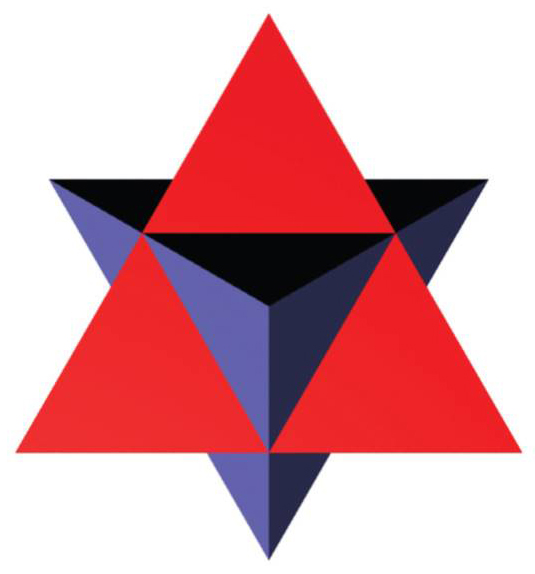 |
The Regular Tetrahedron, as an elementary presentation of solid bodies, when in antithetical relation with itself, produces a regular polyhedral body (a 24-hedron) with many qualities (see chapter DESMOS on this site).
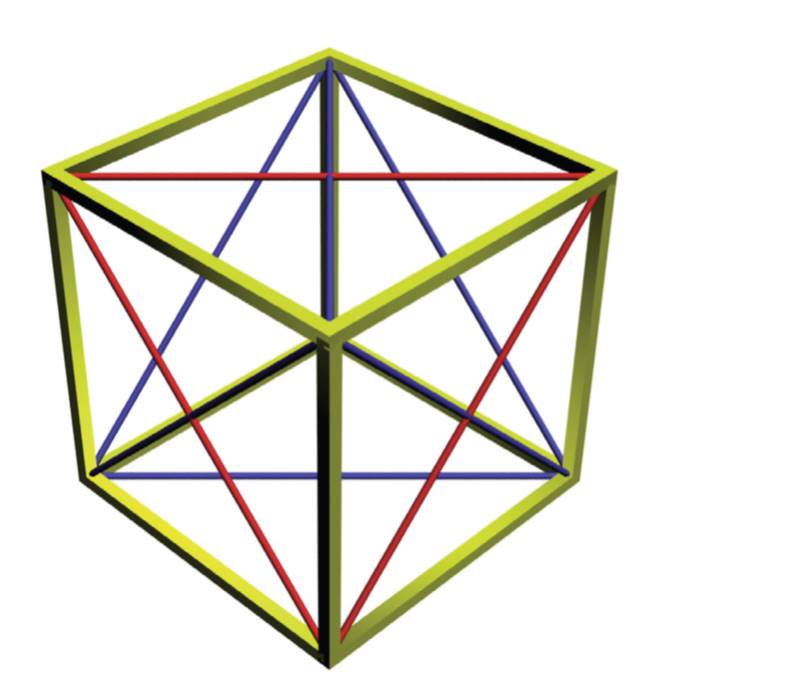
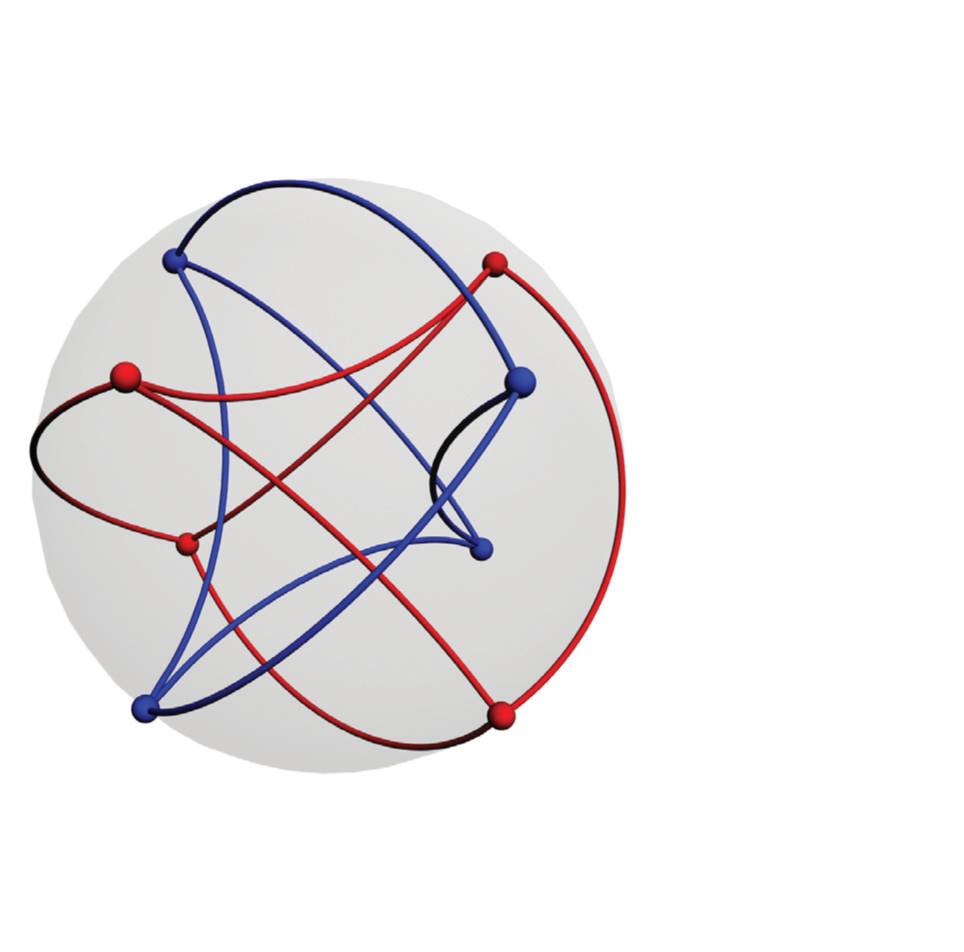
he system, the DESMOS, – from the cube in which it is inscribed as a regular 24-hedron, when in the state of inertia –, in its dynamical presentation is inscribed in the sphere due to the dynamic fields by which it is set in motion (self-motion).
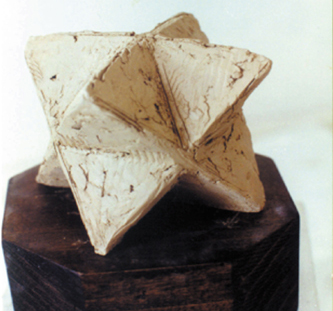
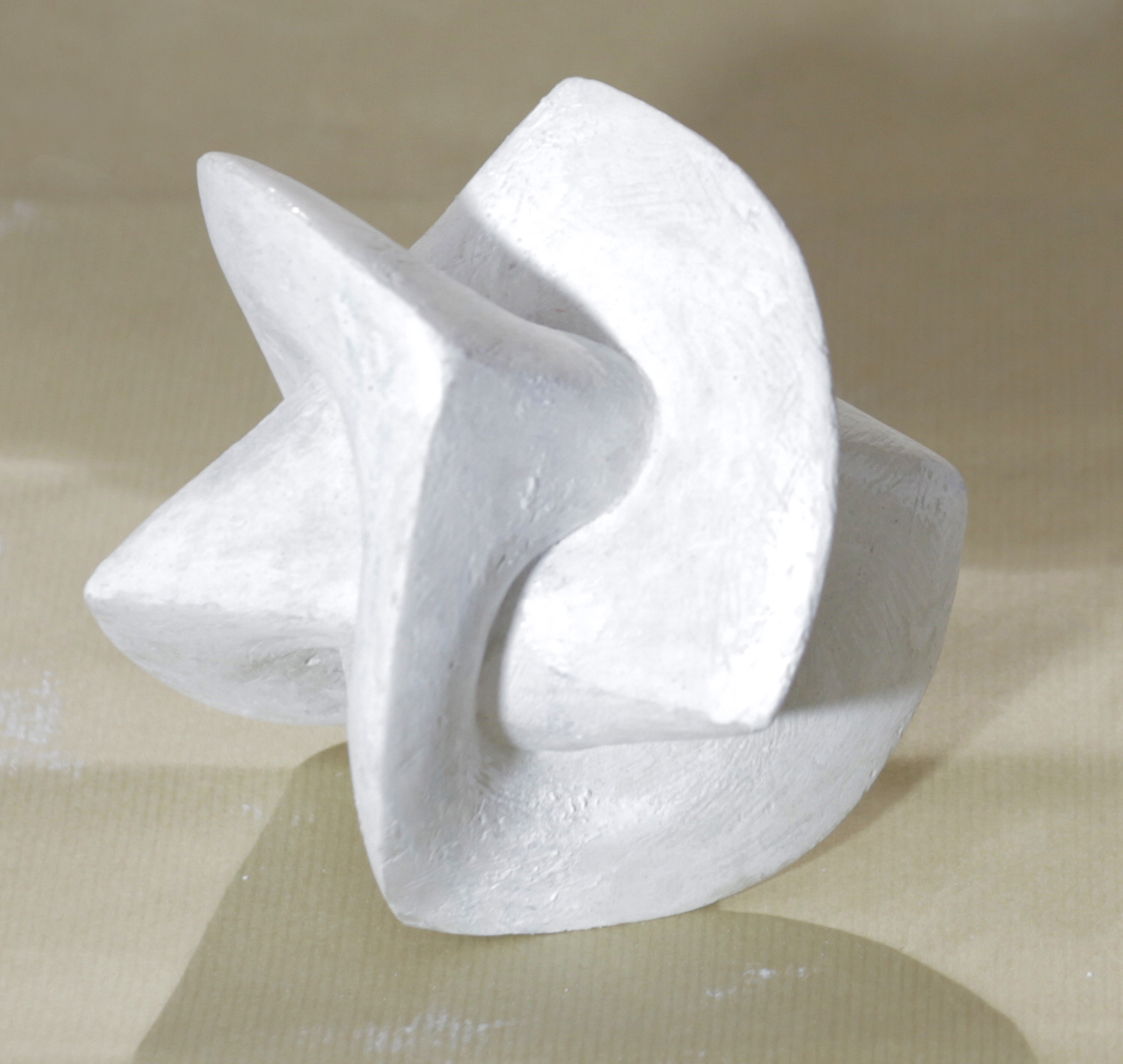
Implementing esthetic criteria onto the connection of the tops of the regular 24-hedron with dynamic fields (attraction), while these (the tops) are in repulsive orbits.
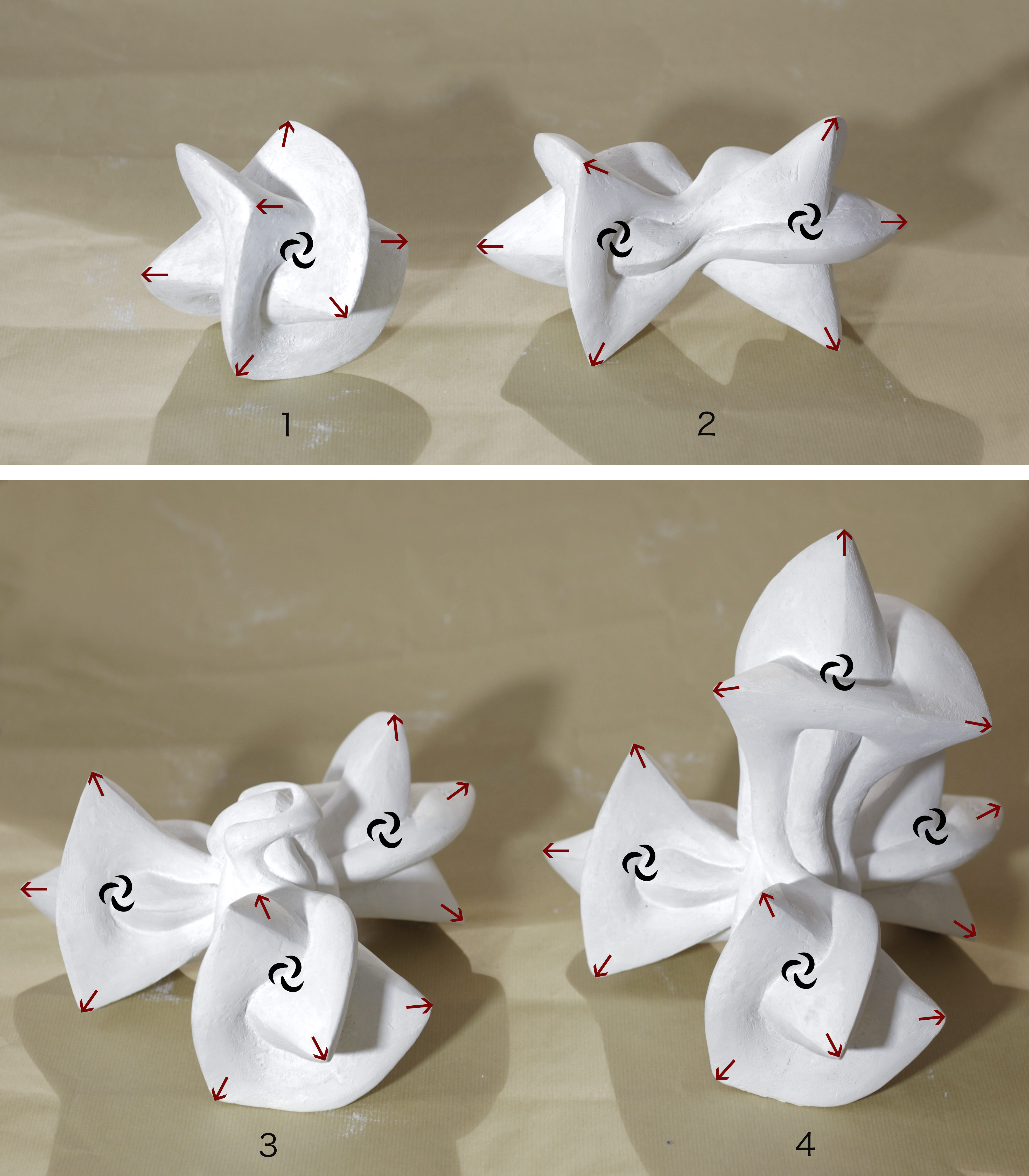
1. Point, 2. Line, 3. Plane, 4. Solid. In the photo, the inserted arrows at the tops of the sculptures show the counter-forces (repulsion), which in combination with the attractive dynamical fields produce the rotation of the system’s parts around themselves (inserted cyclic shapes in the photo).
(repulsion, red arrows), produces a system that, rotating freely around itself, i.e. without axis, only around a center of rotation (black shape in the center), tends to become a sphere.
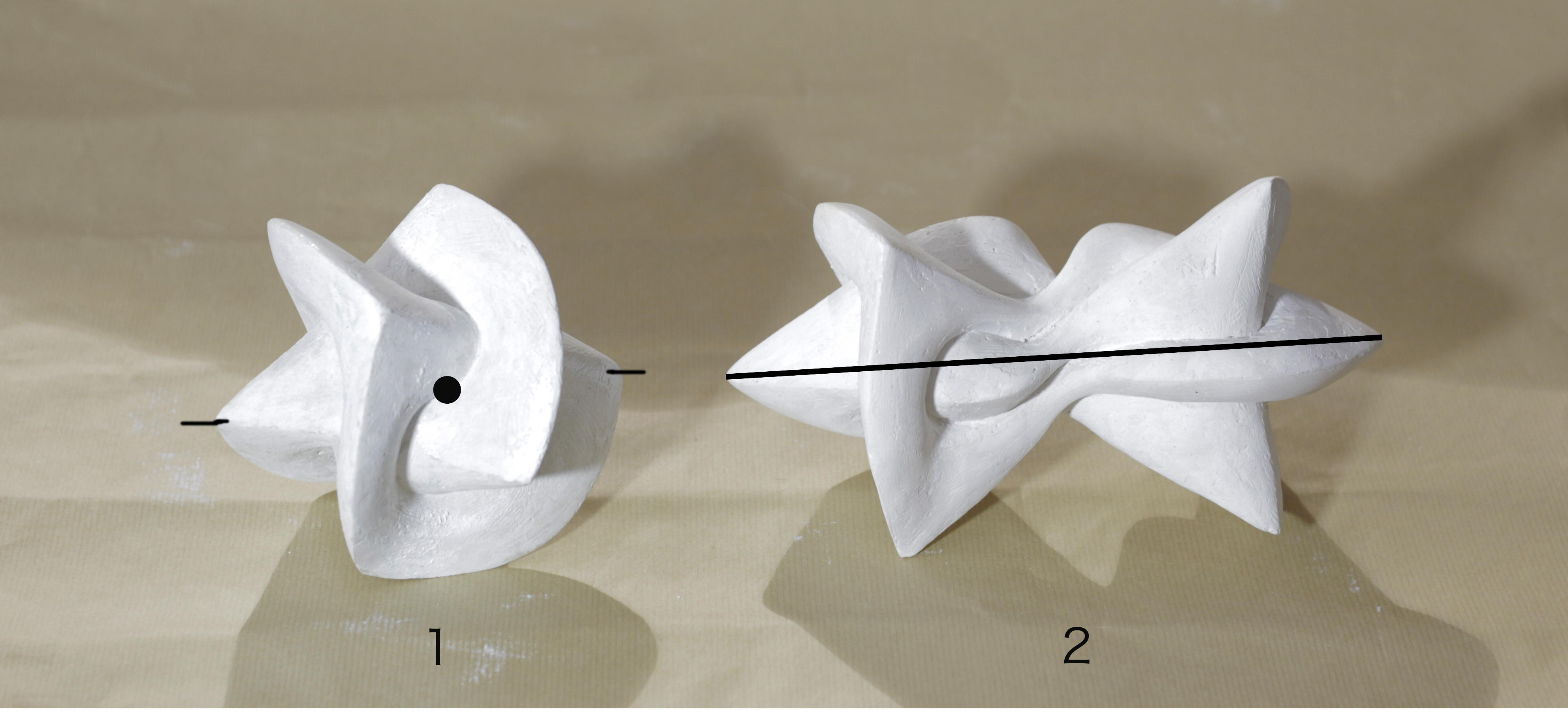
In the DESMOS, the gradual generation of resultants of the repulsive forces (largest dimension of the tops) produces an axis in the rotation around itself. I.e. the DESMOS stops rotating freely, generates poles and as a result produces its duplication, thus creating a new system (Line). This perhaps is the point of transgression from inorganic to organic matter. In this phase, at least three general characteristics of organic matter emerge: Symmetry, Self-motion, Multiplication.
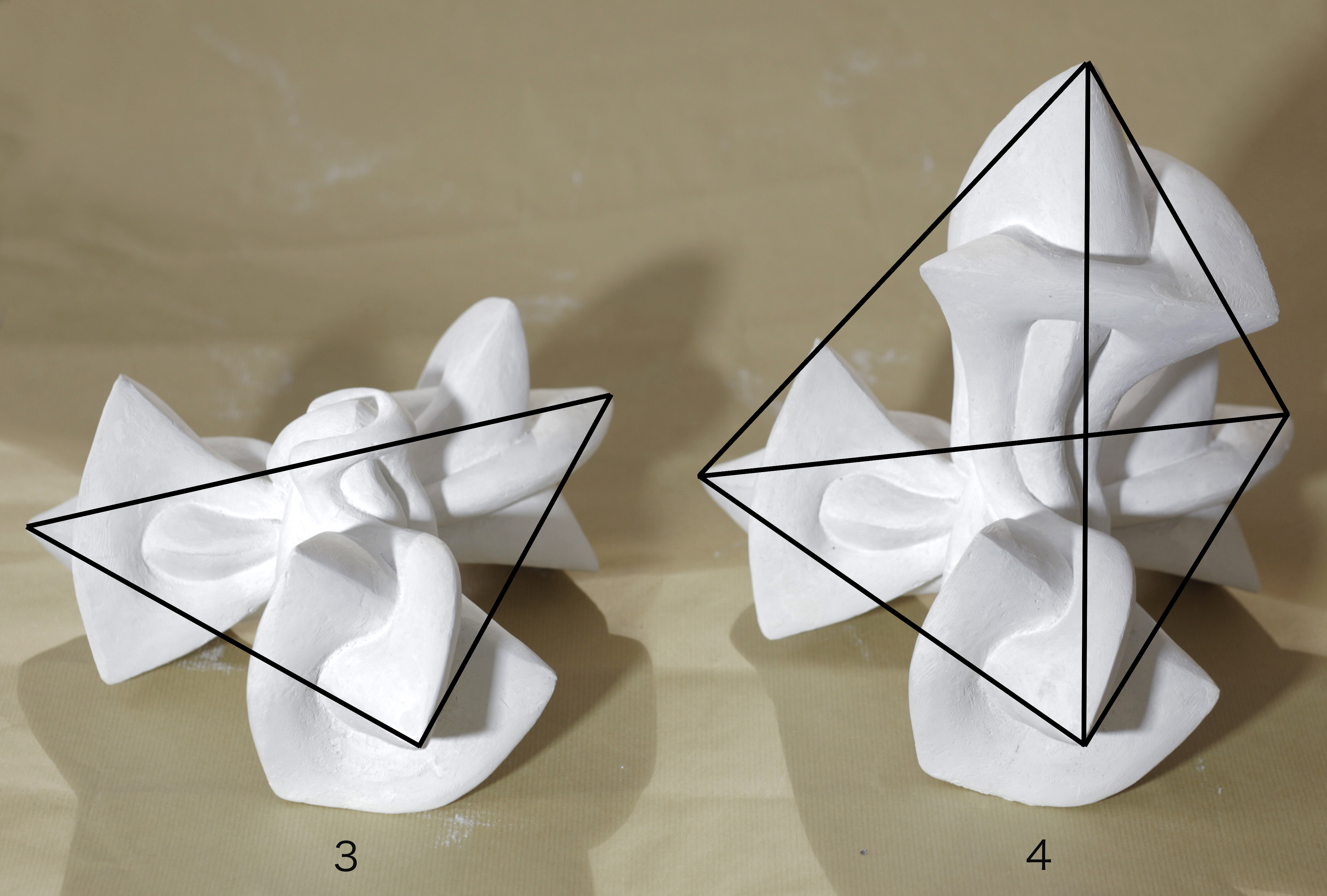
The next stadium of multiplication produces a trebled system (Plane), and finally a quadrupled system (Solid), with which the system “returns” to the structure of the tetrahedron, on a higher level of a more complex tetrahedron that incorporates all previous transitions. In the stadium of the Plane, and especially of the Solid (Tetrahedron), the whole system, as such, returns to free motion. Having, now, obtained the structure of the Tetrahedron, the system has become more complex and more instable, and tends to transform, to dissolve into free energy, unless it connects with another, corresponding tetrahedron, so that both join forming a bigger (that is on a different scale) system, DESMOS, and so forth.
These constant changes of scale seemingly reestablish the system in its simple structure and tend to stabilize it, while at the same time they charge the system with a growing amount of centrifugal forces that increase its instability-mobility as well as the unpredictability of its evolution. In other words: The infinite diversity of forms and shapes of the cosmos is multiplying endlessly and endlessly dissolving into free energy.

